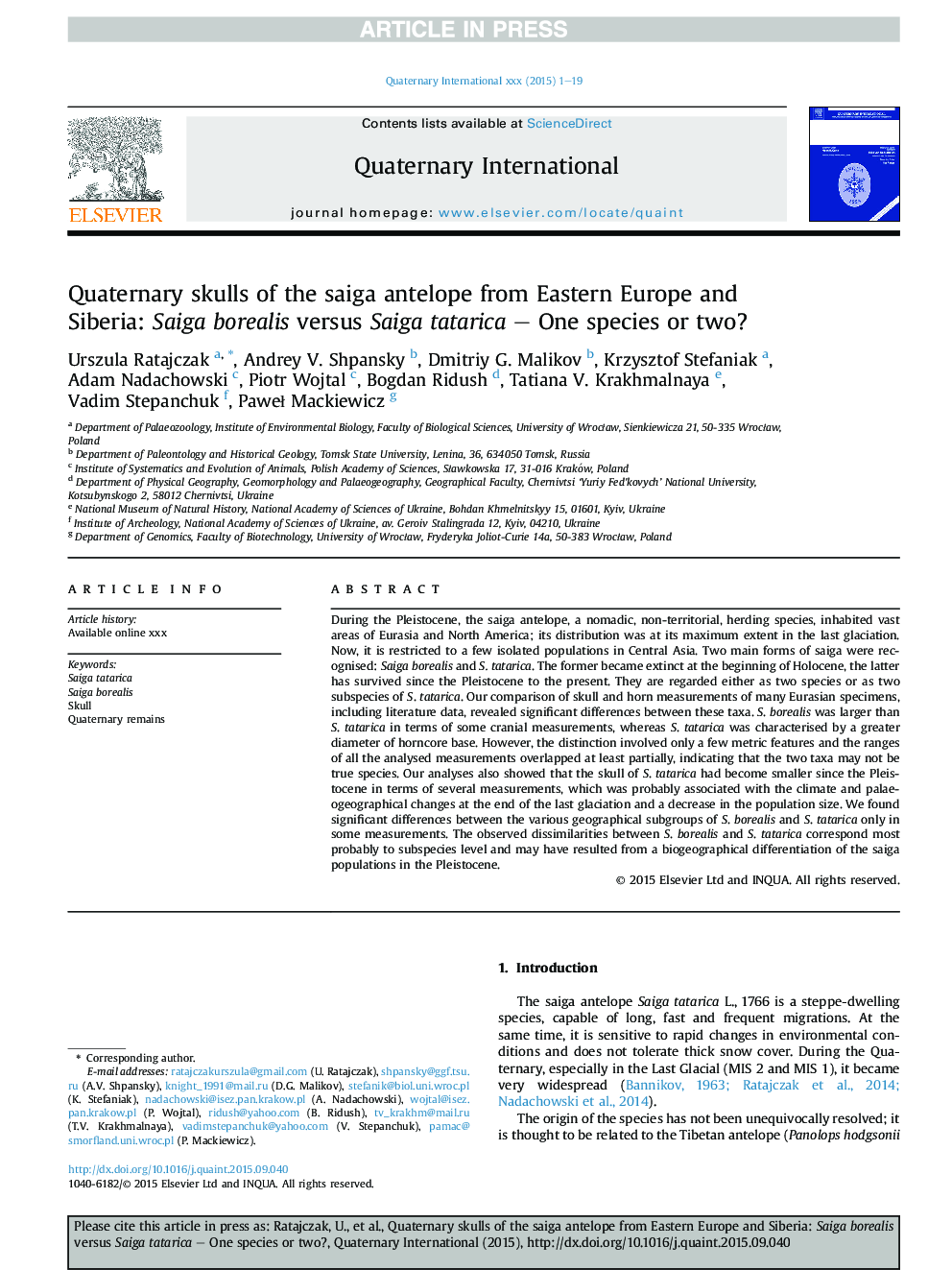| کد مقاله | کد نشریه | سال انتشار | مقاله انگلیسی | نسخه تمام متن |
|---|---|---|---|---|
| 5113974 | 1484087 | 2016 | 19 صفحه PDF | دانلود رایگان |
عنوان انگلیسی مقاله ISI
Quaternary skulls of the saiga antelope from Eastern Europe and Siberia: Saiga borealis versus Saiga tatarica - One species or two?
دانلود مقاله + سفارش ترجمه
دانلود مقاله ISI انگلیسی
رایگان برای ایرانیان
کلمات کلیدی
موضوعات مرتبط
مهندسی و علوم پایه
علوم زمین و سیارات
زمین شناسی
پیش نمایش صفحه اول مقاله

چکیده انگلیسی
During the Pleistocene, the saiga antelope, a nomadic, non-territorial, herding species, inhabited vast areas of Eurasia and North America; its distribution was at its maximum extent in the last glaciation. Now, it is restricted to a few isolated populations in Central Asia. Two main forms of saiga were recognised: Saiga borealis and S. tatarica. The former became extinct at the beginning of Holocene, the latter has survived since the Pleistocene to the present. They are regarded either as two species or as two subspecies of S. tatarica. Our comparison of skull and horn measurements of many Eurasian specimens, including literature data, revealed significant differences between these taxa. S. borealis was larger than S. tatarica in terms of some cranial measurements, whereas S. tatarica was characterised by a greater diameter of horncore base. However, the distinction involved only a few metric features and the ranges of all the analysed measurements overlapped at least partially, indicating that the two taxa may not be true species. Our analyses also showed that the skull of S. tatarica had become smaller since the Pleistocene in terms of several measurements, which was probably associated with the climate and palaeogeographical changes at the end of the last glaciation and a decrease in the population size. We found significant differences between the various geographical subgroups of S. borealis and S. tatarica only in some measurements. The observed dissimilarities between S. borealis and S. tatarica correspond most probably to subspecies level and may have resulted from a biogeographical differentiation of the saiga populations in the Pleistocene.
ناشر
Database: Elsevier - ScienceDirect (ساینس دایرکت)
Journal: Quaternary International - Volume 420, 28 October 2016, Pages 329-347
Journal: Quaternary International - Volume 420, 28 October 2016, Pages 329-347
نویسندگان
Urszula Ratajczak, Andrey V. Shpansky, Dmitriy G. Malikov, Krzysztof Stefaniak, Adam Nadachowski, Piotr Wojtal, Bogdan Ridush, Tatiana V. Krakhmalnaya, Vadim Stepanchuk, PaweÅ Mackiewicz,